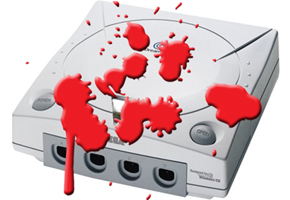
The Bloody History of Sega Console Deaths
The end of a game consoles life is a sad moment, no matter what lead up to the death. Being usurped by a newer sibling with better graphics or just abandoned and left to be beaten to a bloody pulp we should all mourn the passing of a good console.
The Mega Drive (the proper name for the Genesis) and the Saturn served me with years of fun and fond memories and despite consoles of the current generation being so much better than those that came before they still deserve to be remembered in all their glory.
Edge then, the website of the magazine has compiled a list of the 12 most noticeable console deaths. Some consoles died nobly after a long life while others were brutally slaughtered. It’s actually pretty grim reading for any Sega fan as three of their consoles are highlighted and none of them met a particularly satisfying end.
The entry for the Mega Drive reads:
Headstone:
Sega Genesis (Mega Drive)
1989-1997
“It Was Hard Letting Go”complications from add-on cancerCause of Death:
The Genesis was Sega’s most successful console, standing toe-to-toe with the likewise revered Super NES during the intensely fought 16-bit console wars. But as the Genesis aged, Sega was seemingly unable to fully move on to the next generation. In an effort to boost the life span of the Genesis, Sega released the ill-conceived Sega CD and then, the 32X.
Instead of contributing to Sega’s value, the add-ons became a pimple on the game maker, which had somehow managed to significantly blemish an otherwise stellar run with Genesis. The Genesis had a rather wimpy ending, but Sega’s Saturn would fare worse.
Hit this link and read the rest. It’s in interesting read and you might learn something.




![Private: [ID: n5mlGX6Hy8o] Youtube Automatic](https://lastminutecontinue.com/wp-content/uploads/2024/12/private-id-n5mlgx6hy8o-youtube-a-360x203.jpg)

![Private: [ID: 0rWGf0Ij4BE] Youtube Automatic](https://lastminutecontinue.com/wp-content/uploads/2024/04/private-id-0rwgf0ij4be-youtube-a-360x203.jpg)
Doesn’t give any new insights but for new gameplayers I guess it’s not that bad. Also, the Megadrive is still alive and well in Brazil it seems. But I digress.